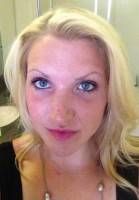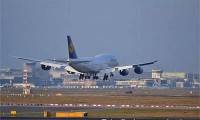When Can I Exercise After Rhinoplasty?
I generally recommend waiting 2 weeks from surgery before flying in an airplane, engaging in light exercise or sexual activity. Resuming sports and heavy exercise should wait until 4 weeks following surgery.
These recommendations are individual and you should discuss this with your surgeon before deciding to undergo surgery. (Cory Goldberg, MD, Toronto Plastic Surgeon)
Typically, you can fly or exercise within a week or more of your procedure. I would recommend speaking with your physician as it depends on each case. (Carlo Honrado, MD, FACS, Los Angeles Facial Plastic Surgeon)
Generally speaking, I do not want patients to fly for 10 days after rhinoplasty. Strenuous exercise (weight lifting, running) is not permitted for two to three weeks, depending on the particular techniques used in the surgery.
Brisk walking is permitted after the first week, and light aerobic exercise (elliptical) after two weeks. Intimacy has a wide variety of definitions and stress levels, so I ask patients to use their best judgement, keeping in mind the other recommendations. A final point involves contact sports (including but not limited to basketball, hockey, boxing, etc.) – these must be avoided entirely for at least 6 weeks. (Evan Ransom, MD, Bay Area Facial Plastic Surgeon)
Limitations after rhinoplasty dependent upon surgeon
Limitations depends on the surgeon performing the surgery and their comfort level. I believe flying is fine as soon as 24 hours after surgery.
I prefer to see my patients the first day after surgery to inspect the nose and then 7 days after I have them return to remove the cast if one was placed at the time of surgery.
I have my patients get up and walk as soon as they are able to (first day) because it helps with circulation and reducing swelling. However, vigorous exercising and lifting heavy weights should wait until 2-3 weeks after surgery. In terms of intimacy, the only concern is in any maneuver that might bump the tip of the nose and as it is the most prominent part of the face it can easily be bumped just with a kiss.
I would be cautious with any activity that might affect the results of the surgery from unwanted trauma in the first 6 weeks. (Kristina Tansavatdi, MD, Los Angeles Facial Plastic Surgeon)
The waiting time for routine activity after rhinoplasty varies from one surgeon to another
Each surgeon will have his/her own preference for return to activity after a rhinoplasty and you will have to follow their guidelines. A tip rhinoplasty as it is sometimes called requires a little less recovery time than a full rhinoplasty. I think by 1-2 weeks flying should be fine. More time for other activities as you can imagine. (Remus Repta, MD, Scottsdale Plastic Surgeon)
Sex, Exercise, or Flying after Rhinoplasty Surgery
Each plastic surgeon has their own routine for open or closed rhinoplasty. Generally, patients are back to work/school in about 7-10 days. Bandages and stitches come off about a week after surgery. You may wash the nose once the cast comes off. Eye glasses may be worn after a couple weeks. Heavy activity, such as exercise or sex, is allowed after a couple weeks. Any such premature heavy activity can cause bruising, bleeding, or shifting of the nose.
Mild intimacy, such as gentle kissing, might be started sooner, but your nose may be too sore if it bumps your significant other. Travel may is permitted about 2 weeks for many surgeons, but some allow travel after one week depending on the specifics of your rhinoplasty.Contact sports are permitted after about 2 months. The “final” results may take months or a year to appreciate. Recovery is faster and restrictions are fewer for “minor” rhinoplasty procedures. (Houtan Chaboki, MD, Washington DC Facial Plastic Surgeon)
Exercising and flying after rhinoplasty
While each rhinoplasty surgeon has his or her own recommendations on flying, my advice for patients who undergo open rhinoplasty is as follows: You may fly after 7 to 10 days. You may begin vigorous exercise at 1 month. This applies towards anything vigorous, including sexual activity. I realize that other doctors have different recommendations. There is no right answer to the questions, as management of post-rhinoplasty patients in an art itself. (Richard A. Zoumalan, MD, Los Angeles Facial Plastic Surgeon)
Exercise after Rhinoplasty
It is very simple. In order to allow for proper healing we allow patients to travel after 7 days and allow vigorous exercise after 3 weeks. (Ramtin Kassir, MD, Wayne Facial Plastic Surgeon)
It is important to follow post operative directions after rhinoplasty because the closer they are followed, the better the chance for an uneventful and quick recovery.
It is best to wait two weeks before exercising because activity that is too vigorous can cause the swelling to increase before it is gone, which delays healing.
After two weeks, it is fine to start exercising, but ease into it – as long as it doesn’t hurt or cause more swelling, then it is OK to increase the intensity. (Andrew Miller, MD, Edison Facial Plastic Surgeon)
Exercising Following Rhinoplasty
After a rhinoplasty there will be a period of time when the internal structures of the nose are swollen. During this period of time, the normal equalization of pressure which occurs between the nose and the inner ear can be impaired.
This can lead to earache while flying which cannot be cleared. Usually, if discomfort in the ears occur while flying, it can be alleviated by pinching the nose and blowing the nose at the same time.
With some of the swelling that occurs after rhinoplasty, this may not be possible. If you need to fly soon after a rhinoplasty, it would be helpful to use some type of nasal spray such as Afrin to help reduce swelling and prevent this problem.
Some patients are at increased risk for developing life-threatening blood clots. Many practices employ a grading system to determine your particular risk for this problem.
One of the criteria for this grading system can be confined travel within one week of your operation. If a grading system such as this is employed and you score high enough to require blood thinners after surgery, then it may be best to delay any flying in the immediate postoperative period in order to remove this particular risk.
After rhinoplasty, the internal tissues are still swollen and any significant increased blood pressure in the vessels of the face can lead to prolonged swelling. It is advisable not to engage in any activity strenuous enough to make your face turn red for three to four weeks after a rhinoplasty. (John J. Edney, MD, Omaha Plastic Surgeon)
Exercise and flying after rhinoplasty
The major recovery after rhinoplasty usually occurs in the first month. During the first week, there will be a lot of swelling and probably some bruising present. Over the next few months that will go away, but all of the swelling may take 12-18 months to resolve.You can fly whenever you feel up to it, but I would advise waiting for a week or so. (P. Daniel Ward, MD, Salt Lake City Facial Plastic Surgeon)
Avoid Flying and Exercising for At Least 2 Weeks Following rhinoplasty
Patients who undergo rhinoplasty are often eager to resume their normal exercise routine. Unfortunately, any maneuver that elevates blood pressure in the immediate post-operative period can result in bleeding. This risk increases when septoplasty is performed in combination with rhinoplasty. For this reason, we recommend avoiding most exertion for about two weeks following surgery.
Strenuous activities such as running, sexual activity and weight lifting should be avoided for three to four weeks following surgery. Travel of any type following rhinoplasty can potentially complicate the post-operative course. In most cases, patients have recovered in about seven to ten days following surgery. Air travel often involves prolonged periods of immobilization and because of this, patients may be at risk for the development of blood clots in their extremities. These blood clots, known as DVT’s, can potentially represent a life threatening phenomenon when they occur. To avoid complications, it’s important that these issues be discussed with your plastic surgeon. This will dramatically decrease the potential for complications. (Richard J. Bruneteau, MD, Omaha Plastic Surgeon)
When can I fly after rhinoplasty?
As a facial plastic surgeon with patients that come in from other cities and countries, I ask that they not fly for 7 days after surgery. On the seventh day, I will remove the splint and allow the patient to fly. I also allow them to go for a brisk walk that evening and the following day, start on an elliptical or exercize bike. Intimacy is allowed by day 10. These are general rules and depends on the individual. If the extent of the surgery was significant or if the patient has a bleeding tendency, then flying and activity will be held until 14 days. (Mike Majmundar, MD, Atlanta Facial Plastic Surgeon)
Flying & Exercise after Rhinoplasty
Many of my patients fly in from out of town for treatments. As a rule, you should wait between 1 – 2 weeks for the swelling to go down and for your body to rest. Flying can make you retain water and swell even more, so it is important to wait at least a week before getting on a plane.
For exercise, the rules are the same. You’ll want to wait at least a week, and even up to two weeks. There will be swelling and bruising after rhinoplasty, so most people will want to wait until there is no evidence of bruising or swelling. It is better to air on the side of caution and not do too much too soon, to allow your body time to rest and heal. Healing time also is dependent upon the person, so some may feel good after a week, while others may need a few extra days to fully recover. (Amir M. Karam, MD, San Diego Facial Plastic Surgeon)
Exercise and air travel after rhinoplasty
The main concern with early return to exercise or vigorous activity after facial plastic surgery including rhinoplasty is that the increased stress on healing tissues and blood vessels could result in additional bleeding and bruising or even a collection of blood called a hematoma.
I recommend remaining very sedentary for one week. Light walking is usually permissible during the second week with a gradual return to normal activity after the second week.
A small risk of bleeding (more likely if additional airway procedures have been performed) exists for up to two weeks after nasal surgery.
If necessary shorter domestic flights are fine after the first week but long international flights should be avoided for at least two weeks after surgery. (J. David Holcomb, MD, Sarasota Facial Plastic Surgeon)
In general I tell patients two weeks before any strenuous, aerobic activities, three weeks before heavy lifting and one month before contact sports.
As far as flying, the big concerns are having a bleeding issue, congestion and dryness. I recommend waiting 5-7 days and considering using Afrin or Neosynephrine to minimize congestion and problems with air pressure.
Nasal mist sprays can help with dryness. As far as sex. That depends on what activities. Keep in mind general restrictions above and use good judgement. (Mark Hamilton, MD, Indianapolis Facial Plastic Surgeon)
Activity after Rhinoplasty
Flying should be avoided until post-operative day 10. Most bleeding (if it occurs) will occur within 48 hours or between days 7-10. I’d rather you be close to me if this occurs rather than 30,000 feet in the air. Light exercise can generally start around weeks 3-4; however, the best indicator of permissibility is to listen to your own body.
If you are having pain, pressure, or additional swelling from any activity, then stop, wait an additional few days, and try again. Also, it is wise not to pick up small children, and you should sleep alone for 2 weeks after your operation (to prevent accidental bumps).
Forceful sniffing, nose blowing, and nose rubbing must be avoided for the first week as well. (Parker A. Velargo, MD, New Orleans Facial Plastic Surgeon)
Activity Level After Rhinoplasty
I tell patients that they need to take if very easy for the first 2 weeks after rhinoplasty. No strenuous activity, bending or lifting for 2 weeks. After 2 weeks, you can get back to your normal routine (Jonathan Pontell, MD, FACS, Philadelphia Facial Plastic Surgeon)
Exercising and flying after rhinoplasty
In most cases I do not recommend flying the first week after rhinoplasty until the dressing is removed. When you have a lot of congestion following surgery there is a greater likelihood of clogging of the ears. In the early period after surgery, the use of decongestants at the time of flying may reducing the discomfort in your ears. The primary concern with exercise is that we don’t want patients significantly elevating their blood pressure and pulse which increases the chance of postoperative bleeding.
There is no single scientifically researched answer to when to start exercise, and many surgeons have different answers. I recommend no heavy lifting or strenuous activities for three weeks after surgery. After two weeks lighter cardio type activity is acceptable for some individuals. It is recommended that you ask your surgeon their recommendations. (Robert Glasgold, MD, East Brunswick Facial Plastic Surgeon)
Fly at a week; exercise at two weeks after rhinoplasty
I allow my patients to fly as soon as I take the splint off and stitches out. This is usually a week after surgery. I encourage people to walk the day after surgery, but not exercise for two weeks. I ask patients to not do anything that will raise their blood pressure for two weeks so they don’t have increased swelling.
Elevating your blood pressure during the initial two weeks after surgery will increase your swelling and prolong your recovery. Walking is OK because you can walk miles without raising your blood pressure, particulasrly if you are a regulare exerciser. (Stephan Finical, MD, Charlotte Plastic Surgeon)
How Soon After Rhinoplasty Can I Fly or Exercise?
An enormous portion of my practice includes out of town and out of country patients and I tell them that they can fly as early as a day or two after the surgery but they have to take pseudophed 30 minutes before flying to avoid any ear discomfort, especially if the surgery includes septoplasty and turbinectomy and I ask them to move their ankles and walk around in the airplane as soon as they are allowed to minimize the potential for clot formation in their legs.
I also encourage all of my patients to start walking as soon as possible for the same reason. I ask my patients to avoid prolong bending and exercises that may raise their pulse or blood pressure for 2-3 weeks, depending on the extent of the surgery. They will also avoid wearing glasses without added padding on the nose for 5 weeks.During the intercourse the blood pressure rises significantly and may result in bleeding and bruising, which should be avoided for 2-3 weeks, depending on the magnitude of the surgery. (Bahman Guyuron, MD, Cleveland Plastic Surgeon)



